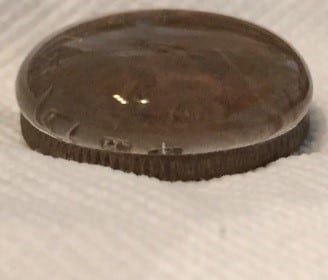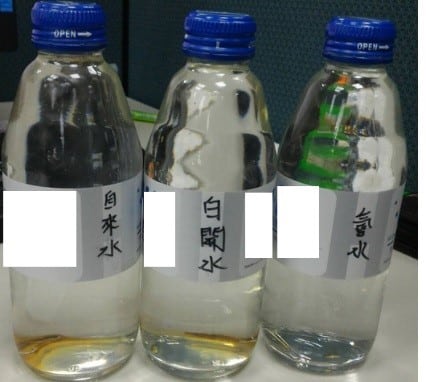低氘氫水實驗室 研究項目
- 極超高純氫氣研究—7N、8N維米製程氫氣
- 固態儲氫器研究、太空船用固態儲氫器研究
- 低氘飽和氫水製程研究及應用研究
- 低氘水用於生物實驗及製藥應用研究
- 氫氣呼吸之劑量及物理效應研究
- 低氘水用於育苗育種農業生技研究
- 氫氣用於食品科學研究
- 低氘水用於食品科學研究
- 呼吸氫氣及低氘飽和氫水之於癌症、中風、巴金森症、妥瑞症、糖尿病、心肌損傷、肝損傷、腦中風、放射治療損傷、老年癡呆、心肌硬塞、痛風、COPD、異位性皮膚炎、僵直性脊椎炎、過敏、紅斑性狼瘡及自體免疫性疾病之觀察研究
美國FDA於2014年4月28日正式回函認可氫氣(Hydrogen gas)可做為安全的食品添加劑。No. 520號文說明。氫氣於氫水中的濃度為2.14%。幫大家翻譯了這篇文。(譯者為Macaco)今年4月美國FDA就公佈這篇文件,主要是在說明氫氣H2被認可成為一安全的食品添加劑,可加在飲料中,做為食品的保鮮用途。文中也說明了歐盟較早將氫氣列為安全的食品添加劑。文件中所指的氫氣為 99.995%(純度,4N5)以上。文件中所指的氫氣溶於水的單位應以體積濃度(氣體體積ml 對 液體體積ml )來標示。最高飽和濃度為 2.14% (100cc水中含有2.14cc氫氣)
本來覺得此公告文件頗為單純,就沒有想要花時間去翻譯。但這英文的文件仍被一些不良業者拿去利用。誤導民眾。FDA No. 520號文說明簡單明瞭,氫氣溶解與水就要用體積濃度去算,其最高濃度為2.14%。而不良業者硬要用不是單位的ppm去誤導民眾。所以就將文件全文翻譯了。請鄉民們自己看。
這篇公告其實只是在揭露高純氫氣(99.995%純度,4N5以上)使用在食品上是安全的。所以被通過為食品添加劑使用。
此文件並非說明氫氣已經被FDA(美國食品藥物管理局)通過成為一種治療劑與藥物。在更白話地說:FDA只是告訴你,吃氫氣(99.995%純度,4N5以上,每日攝取上限35.84cc)
氫氣目前不是藥。想要用氫氣來改善健康的朋友們務必注意。如果你想要吃氫氣,請務必請教專家。如何取得高純氫氣。
以下是No. 520號文全文翻譯
Agency Response Letter GRAS Notice No. 520
http://www.fda.gov/Food/IngredientsPackagingLabeling/GRAS/NoticeInventory/ucm432907.htm (原文連結)
Agency Response Letter GRAS Notice No. 520
官署回函普遍認可的安全食品添加物公告清單 No. 520 (氫氣,Hydrogen gas)
Return to inventory listing: GRAS Notice Inventory
回到普遍認可的安全食品添加物公告清單
See also Generally Recognized as Safe (GRAS) and about the GRAS Notice Inventory
另見普遍認可的安全食品添加物 (GRAS) 定義,與安全食品添加物公告清單
CFSAN/Office of Food Additive Safety
食物安全與營養中心/食品添加物安全辦公室
November 28, 2014
Cody Cook, M.D., Ph.D.
MitoGene Beverage Company, LLC
401 S. Cedar Street
Little Rock, AK 72205
Re: GRAS Notice No. GRN 000520
來信者為 Dr.Cook,MitoGene 飲料責任有限公司的醫學士博士 (具有醫師資格後再取得博士學位)
Dear Dr. Cook:
The Food and Drug Administration (FDA) is responding to the notice, dated April 28, 2014, that you submitted in accordance with the agency’s proposed regulation, proposed 21 CFR 170.36 (62 FR 18938; April 17, 1997; Substances Generally Recognized as Safe (GRAS); the GRAS proposal). FDA received this notice on May 14, 2014, filed it on June 2, 2014, and designated it as GRAS Notice No. GRN 000520.
親愛的庫克博士:
食品與藥物管理署 (FDA) 回應您於 2014年4月28 日遞交符合本官署所薦可規章 21 CFR170.36 (62 FR 18938,1997年4月17 日,安全食品添加物,安全食品添加物提案)。FDA 於 2014年5 月 14 接受此公告,並於 2014 年 6 月 2 號建檔,並正式認定其為安全食品添加物公告中的編號 000520 號。
The subject of the notice is hydrogen gas. The notice informs FDA of the view of MitoGene Beverage Company, LLC (MitoGene) that hydrogen gas is GRAS, through scientific procedures, for use in flavored beverages, drinking water, and soda drinks, for the purpose of preventing oxidation in the beverage products, at levels up to 2.14% by volume.
本公告的主角就是氫氣。本公告係由 MitoGene 飲料責任有限公司通知FDA,其研究發現:透過科學方法加入氫氣來防止在調味飲料、飲用水與碳酸飲料等飲料產品中的氧化作用,其氫氣濃度需達到體積濃度的 2.14%。
MitoGene describes the identity of hydrogen gas (CAS registry number: 1333-74-0). Hydrogen gas is also referred to as molecular hydrogen gas. Hydrogen gas has a molecular weight of 2.016 grams (g)/mole; its specific volume is 11.986 meter (m)3/kilogram (kg); and its solubility in water is 0.0214 milliliter (mL) hydrogen (H2) (gas) /mL water (H2O) (liquid (liq)). MitoGene describes hydrogen gas as a non-toxic, flammable, lighter-than-air gas that reacts with oxidizing compounds. When hydrogen gas is dissolved in water it is chemically stable and not flammable.
MitoGene
詳細描述了氫氣的識別定義 (CAS 註冊碼:1333-74-0):氫氣被歸類為分子態氫氣,其分子重量為 2.016 克/摩爾,標準體積為 11.986 立方公尺/公斤,其在水 (液態水) 中的溶解度為 0.0214 公撮/公撮。MitoGene 陳述氫氣是一個無毒,可燃,比空氣輕,且會與氧化化合物反應的物質。當氫氣溶於水時,其化性穩定、且不可燃。
MitoGene describes the manufacturing of hydrogen gas. It is produced in a reformer device by reacting steam with natural gas at high temperatures. Trace contaminants include oxygen, water vapor, argon, carbon monoxide, carbon dioxide, nitrogen, and hydrocarbons. MitoGene states that food grade hydrogen gas is manufactured at a high purity (≥99.995%) using good manufacturing practices (GMP). All materials used in the manufacturing process of hydrogen gas are food grade and used within accepted limits of GMP.
MitoGene陳述其氫氣的置備。氫氣是由一個水蒸氣與空氣在高溫中反應的改良裝置置備而成。其中的微量的不純物包括氧氣、水蒸氣、氬氣、一氧化碳、二氧化碳、氮氣和碳氫化合物。物MitoGene 聲稱其食品等級的氫氣是以符合美國優良製造標準 (GMP) 置備出的氫氣 (純度高於 99.995%)。所有在置備氫氣過程所用到的材料都符合美國優良製造標準 (GMP)。
MitoGene intends to use hydrogen gas in flavored beverages, drinking water, and soda drinks. The highest intended use level of solubilized hydrogen gas in beverages will be 2.14% (volume (vol) H2 (gas) /vol H2O (liq)), the saturation concentration for molecular hydrogen gas in water. MitoGene includes information describing that hydrogen gas-enriched beverages are produced by introducing high purity hydrogen into the liquid medium under high-pressure conditions (~100 pounds per square inch), resulting in a product containing solubilized hydrogen gas. MitoGene states that the European Union has approved hydrogen gas as a packaging gas. MitoGene assumes a maximum daily consumption of hydrogen gas-enriched beverages to be 2 Liters/person/day (2000 g/p/day), and discusses that this will result in a hydrogen gas exposure equal to 3.2 milligrams (mg)/p/day.
MitoGene
想要將氫氣運用在調味飲料,飲用水與碳酸飲料中。其最建議氫氣於飲料中的溶解度為 2.14% (體積濃度,溶劑為液態水),即氫氣在水中的飽和濃度。MitoGene 收集的資料指出高濃度氫氣的飲料可透過高壓環境 (100psi-約每平方英吋 100 磅的壓力) 將氫氣導入水中製成內溶氫氣的產品。MitoGene 指出歐盟已經認可氫氣可用來做包裝氣體。MitoGene 假定高濃度氫氣的飲料其每日最高攝取量為每人每天 2 公升,意指每人每天為 3.2 毫克的攝取量。
MitoGene discusses published studies reporting on the respiratory elimination of both endogenously produced hydrogen gas as well as consumed hydrogen gas in human subjects. MitoGene summarizes a published study, which shows an acute increase in exhaled hydrogen gas after volunteers drank hydrogen gas-enriched water. Shortly thereafter, the hydrogen gas levels that were determined using the hydrogen gas breath test decreased to baseline levels. MitoGene states that from the scientific literature there is nothing of toxicological concern that would dispute its conclusion that the intended use of hydrogen gas as described in this notice is GRAS.
MitoGene
針對人體呼吸消耗內源性氫氣和外源氫氣是相同的研究進行了討論。MitoGene 收集的一篇研究指出,實驗者在飲用完高濃度氫氣的飲水後,其呼出的氫氣量大幅上升。但在很短的時間後,以氫氣呼吸測試測出的氫氣濃度即降低到了一般水準。MitoGene 指出從科學文獻中可見,結論是氫氣並不具有任何毒物效應。在本篇說明中,該公司將氫氣加於飲料中的意圖,是符合安全食品添加物 (GRAS) 標準。
Standards of Identity
定義標準
In the notice, MitoGene states its intention to use hydrogen gas in several food categories, including foods for which standards of identity exist, located in Title 21 of the Code of Federal Regulations. We note that an ingredient that is lawfully added to food products may be used in a standardized food only if it is permitted by the applicable standard of identity.
於此說明中,MitoGene 指出他們想將氫氣加到數種食品種類中,包含一些已名列於聯邦規範條目 (the Code of Federal Regulations) 第 21 條的食品。我們提醒了一個能被合法加入食品中的成分,若其在一個可應用的定義標準中被允許添加,可能只能被運用在一標準食品中。
Potential Labeling Issues
潛在的標示問題
Section 403(k) of the Federal Food, Drug, and Cosmetic Act (FD&C Act) provides that a food shall be deemed to be misbranded if it bears or contains any chemical preservative, unless it bears labeling stating that fact. Section 403(i)(2) of the FD&C Act provides that a food shall be deemed to be misbranded unless its label bears the common or usual name of each ingredient. Section 403(a) of the FD&C Act provides that a food shall be deemed to be misbranded if its labeling is false or misleading in any particular. MitoGene’s use of hydrogen gas for the purpose of preventing oxidation constitutes use as a preservative.
聯邦食品、藥品和化妝品法案第 403(k) 段指出,若一個食品含有任何化學保存劑但沒有標示的話,可被視為是標示錯誤。第 403(i)(2) 段指出一個食品需標示每一項成分的通用名稱 (俗名),否則也會被視為是標示錯誤。第 403(a) 段亦指出一個食品若標示內容不正確或誤標任何一個項目,亦會被視為是標示錯誤。MitoGene 在此案中是運用氫氣做為保存劑來防止內容物的氧化。
Therefore, the ingredient statement on labels of food products that contain hydrogen gas must comply with the labeling regulations that implement sections 403(k) and 403(i)(2) of the FD&C Act. For example, 21 CFR 101.22(j) requires that the food to which a chemical preservative is added bear a label declaration stating both the common or usual name of the ingredient and a separate description of its function. Further, food that is subjected to any form of preservation, except as provided in 21 CFR 101.95(c), may not be labeled as “fresh.” If MitoGene has any questions about the appropriate labeling of this food ingredient, MitoGene should contact the staff in the Office of Nutrition, Labeling, and Dietary Supplements (ONLDS) in the Center for Food Safety and Applied Nutrition.
因此,其食品內容物含有氫氣的標示必須要符合聯邦食品、藥品和化妝品法案第 403(k) 段與第 403(i)(2) 段的相關規定。
舉例來說,聯邦規範條目 (the Code of Federal Regulations) 第 21 條 101.22(j) 要求若一個食品有添加化學保存劑時它必須在標示中清楚公告其成分之俗名,並另闢一個段落描述其功能。並且,除了聯邦規範條目 (the Code of Federal Regulations) 第 21 條 101.95(c) 的食品以外,一個食品若含有任何保存劑在內,即不可出現「鮮食」相關的標示。若 MitoGene 公司有任何有關食物成分該如何正確標示的問題,MitoGene 應該與食物安全與營養中心下轄的營養產品、標識及飲食補給品辦公室 (Office of Nutritional Products, Labeling and Dietary Supplements) 聯繫。
In describing the intended use of hydrogen gas and in describing the information that MitoGene relies on to conclude that hydrogen gas is GRAS under the conditions of its intended use, MitoGene raises a potential issue under the labeling provisions of the FD&C Act. To conclude that hydrogen gas is GRAS, MitoGene cites efficacy studies in animals that show potential physiological effects of hydrogen gas that the notifier views as beneficial. Under section 403(a) of the FD&C Act, a food is misbranded if its labeling is false or misleading in any particular. Section 403(r) of the FD&C Act lays out the statutory framework for the use of labeling claims that characterize the level of a nutrient in a food or that characterize the relationship of a nutrient to a disease or health-related condition. If products that contain hydrogen gas bear any claims on the label or in labeling, such claims are the purview of ONLDS. The Office of Food Additive Safety neither consulted with ONLDS on this labeling issue nor evaluated the information in your notice to determine whether it would support any claims made about hydrogen gas on the label or in labeling.
在此 MitoGene 其對氫氣的使用意圖的陳述,以及他們的是以視氫氣為安全食品添加物 (GRAS) 的前提下進行他們的使用規劃,這激起了一個在目前聯邦食品、藥品和化妝品法案規定下的食品標示潛在議題。為了證實氫氣為安全食品添加物 (GRAS),MitoGene 引用了許多有力的動物實驗研究指出,氫氣的潛在生理效應可被視為是有益的。
聯邦食品、藥品和化妝品法案第 403(a) 段指出一個食品若標示內容不正確或誤標任何一個項目,會被視為是標示錯誤;第 403(r) 段則寫明了現行對標示聲明了如何描述食品中的營養成分,與營養成分與疾病與健康關係相關的法規架構。若一個產品含有氫氣且帶有任何內含氫氣的標示,其屬於營養產品、標識及飲食補給品辦公室 (ONLDS) 的管轄範疇,食品添加物安全辦公室既不會針對標示爭議而去找營養產品、標識及飲食補給品辦公室協商,亦不會去審核其提供的資訊來判讀其是否支持任何內含氫氣相關的標示聲明。
Section 301(ll) of the FD&C Act
聯邦食品、藥品和化妝品法案第 301(ll) 段
The Food and Drug Administration Amendments Act of 2007, which was signed into law on September 27, 2007, amends the FD&C Act to, among other things, add section 301(ll). Section 301(ll) of the FD&C Act prohibits the introduction or delivery for introduction into interstate commerce of any food that contains a drug approved under section 505 of the FD&C Act, a biological product licensed under section 351 of the Public Health Service Act, or a drug or a biological product for which substantial clinical investigations have been instituted and their existence made public, unless one of the exemptions in section 301(ll)(1)-(4) applies.In its review of MitoGene’s notice that hydrogen gas is GRAS for the intended uses, FDA did not consider whether section 301(ll) or any of its exemptions apply to foods containing hydrogen gas. Accordingly, this response should not be construed to be a statement that foods that contain hydrogen gas, if introduced or delivered for introduction into interstate commerce, would not violate section 301(ll).
2007 年食品藥物管理法修正案,於 2007 年 9 月 27 日正式立法,修改了食品藥物管理法修正案在其中加入了第 301(ll) 段法條。第 301(ll) 段禁止在州與州之間的商務行為中,任何一個食品皆禁止提到或傳遞任何訊息提及其內含聯邦食品藥品和化妝品法案第 505 段明列的藥物、或醫療器材及大眾健康服務法第 351 段註冊的生技產品、或已有明確臨床研究且是大量生產藥物或生技產品。
除了在第 301(ll) 段 (1)-(4) 的藥品例外。在以第 301(ll) 段法規檢視MitoGene其對氫氣在食品中的規劃用途都符合安全食品添加物 (GRAS) 的聲明中,FDA 並不考慮於第 301(ll) 段或其內列的食品免責添加物中包含氫氣。據此,若於州際商務之間提到或傳遞相關的訊息,並沒有違反第 301(ll) 段之法規,這個回應不應被解釋成這批食品中含有氫氣。
Conclusions
結論
Based on the information provided by MitoGene, as well as other information available to FDA, the agency has no questions at this time regarding MitoGene’s conclusion that hydrogen gas is GRAS under the intended conditions of use. The agency has not, however, made its own determination regarding the GRAS status of the subject use of hydrogen gas. As always, it is the continuing responsibility of MitoGene to ensure that food ingredients that the firm markets are safe, and are otherwise in compliance with all applicable legal and regulatory requirements.
In accordance with proposed 21 CFR 170.36(f), a copy of the text of this letter responding to GRN 000520, as well as a copy of the information in this notice that conforms to the information in the GRAS exemption claim (proposed 21 CFR 170.36(c)(1)), is available for public review and copying at www.fda.gov/grasnoticeinventory.
根據 MitoGene 所提供的資訊,如同其他 FDA 所公告的資訊一樣,本官署在本次對 MitoGene 有關氫氣在該公司申請的使用意圖的狀況下,是屬於安全食品添加物 (GRAS) 的結論沒有任何問題,關於氫氣在個別的使用上是不是仍算是安全食品添加物 (GRAS)—-註:將氫氣用於食品添加劑以外的用途仍不是安全的。
官署從來不會有其個別的判定。但MitoGene 有持續的責任要確保其架上食品的成分都是安全的,在其他方面也都需承諾其符合所有該適用的法律與相關的增修規範。根據聯邦規範條目第 21 條 170.36(f),本信所附的文件 GRN 000520,與本案所須遵從的聯邦規範條目第 21 條170.36(c)(1) 明列的安全食品添加物 (GRAS) 免責聲明都可以在www.fda.gov/grasnoticeinventory上供公眾閱覽和複印。
Sincerely,
敬啟,
Dennis M. Keefe, Ph.D.
Director
Office of Food Additive Safety
Center for Food Safety and Applied Nutrition
Dennis M. Keefe 博士
總監
食品添加物安全辦公室
食物安全與營養中心
台灣氫水實驗室 TEL:0963-210-763
email: ddh2water@gmail.com
台灣氫水實驗室部落格:http://blog.xuite.net/hworker77086600/twblog
歡迎來電索取氫水辨認方法(防止喝到傷身的假氫水)
氫水,氫分子、氫氣、健康氫水,水素水,負電位,ORP,抗氧化,抗自由基,氫分子醫學,氫水,Hydrogen water,氫氣、氫,台灣氫水研究中心,氫思語,孫學軍,太田成男,鹼性離子水,小分子水,能量水,電解水,富氫水,負氫水,活水,健康,養生,活力,大氫鬆,小氫鬆,氫水機,水素,水素水機,王群光,氫氧機,綠加利,活美水素水,低氘水,活性原子氫,富氫水,負氫水,每日水素,活氫水,氫氧造水機,百樂,負氫,氫博士,氫水棒,氫源,新德美,HOH,鹼性活氫水,氫美機,負氫離子水,氫氣棒,呼吸氫氣,氫氧療法,加氫水,氫水、健康氫水、水素水、負電位、ORP、抗氧化、抗自由基 、氫分子醫學、氫水、Hydrogen water、氫氣、氫、氫水、台灣氫水實驗室、台灣氫水研究中心、氫思語、孫學軍、太田成男、鹼性離子水、小分子水、能量水、電解水、富氫水、負氫水、活水、健康、養生、活力、大氫鬆、小氫鬆、氫水機、水素、水素水機、王群光、氫氧機、綠加利、活美水素水、低氘水、活性原子氫、富氫水、負氫水、每日水素、活氫水、氫氧造水機、百樂、負氫、氫博士、氫水棒、氫源、新德美、HOH、鹼性活氫水、氫美機、負氫離子

